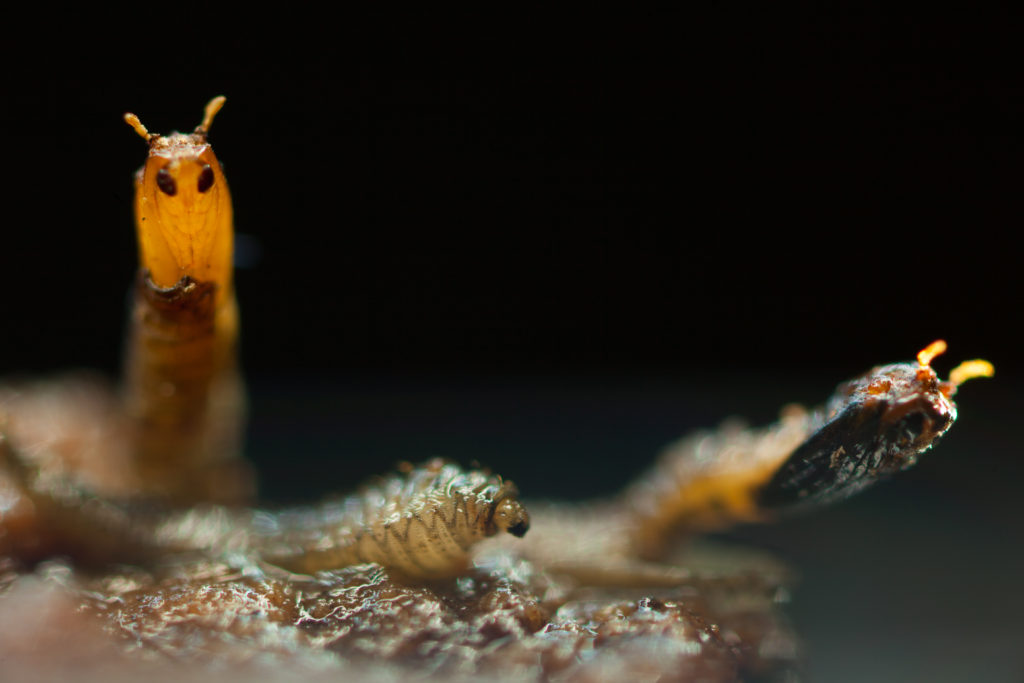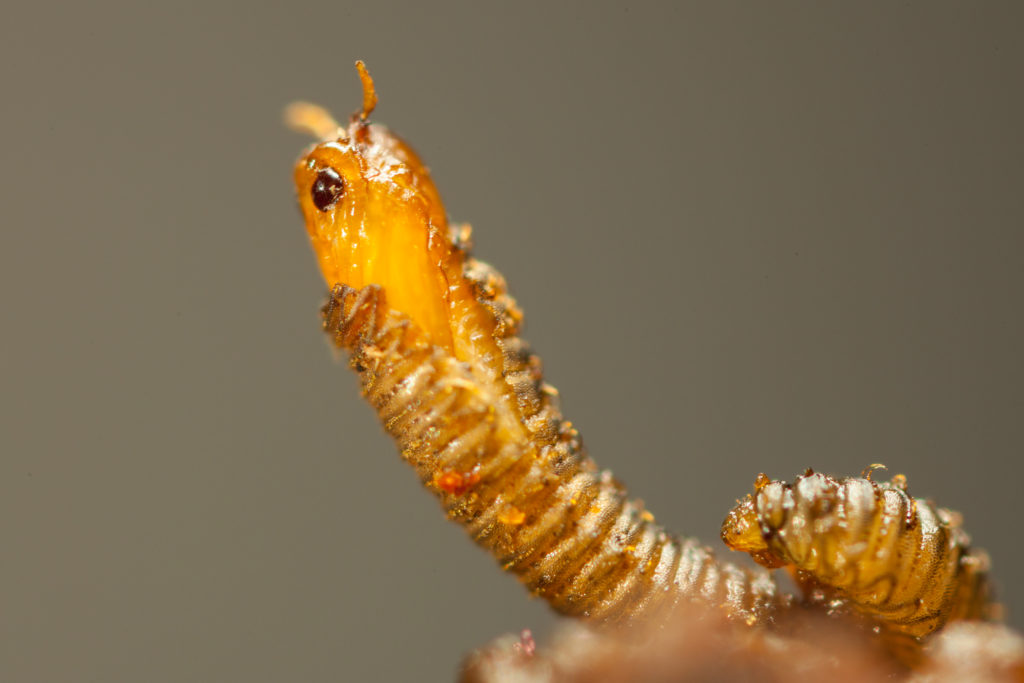Decaying fragments hang from the cavity’s roof as streaks of viscous dark red liquid meander down its sides.
The peculiar scent of extracellular digestion from fungal mycelia impregnates the stale air.
I force myself into the cramped cavity to further investigate. With only half of my body inside, I sit motionless, looking up, in awe. The sound of silence is overwhelming.
The bifurcating trunk bears equally tall galleries. Water percolates high above, saturating the substrate.
Insects feeding on decayed organic matter have turned the surface cellulose into a pulp. Partially digested body segments of forgotten generations provide vital nutrients for those in current development.
Under the dim light passing through the large crack, I observe predatory beetles moving across my body, in search of tender larvae inhabiting the collapsed fragments from above.
I cover most of the small aperture to the outside, trapping myself in darkness. As I breath shallowly to fit in the claustrophobic space, the sound of intermittent water droplets impacting my forehead break the silence.
Inches away, a secret is being unveiled before my eyes. A new species of fly inhabits the tree cavity. Their unknown anatomy and behavior is revealed for the first time through the green hue of my night vision goggles.
Mature larvae 3mm long move below the organic matter, consuming the moist pulp. Their body segments are decorated with exquisite intricate patterns. Rows of hairs arranged throughout their dorsal side help trap the moist substrate.

Predatory slugs and spiders patrol the vertical surface. Below, hidden by the soft mass on their backs, larvae use their posterior respiratory siphons to acquire vital oxygen from above.
Lethargy signals the initiation of metamorphosis.
Their heads soon become an empty shell as their organs retreat inside their thorax to rearrange one last time.
Respiratory horns slowly grow out their backs.
As the insects develop inside their pupal skin, they outgrow their old larval skin, splitting it down its sides.

They slowly migrate to the surface, where they are most vulnerable. The thin layer of moist substrate on their backs is their only defense against predators. There, they remain face down until their metamorphosis is complete.
An individual is ready to emerge. The pupa slowly pushes itself out of the old larval skin. With its exposed head capsule and thorax, the emergence commences.
The skin splits down the middle, from its forehead down its back, tearing its face off. Its larval head capsule and front half of its thorax hang perpendicular to its body.
With controlled movements from its abdomen, it pushes itself free. Its legs spread for the first time.
It uses its tender limbs to pull its compressed abdomen from its old skin. It is a female. She hangs on to the vertical wall until her skin hardens. Her larval and pupal skins are now part of the cryptic biological memoir inscribed in the lugubrious facade.
Soon after her emergence, a male begins to court her. The pair quickly disappear into the dark gallery above.
Down below, through the crack in the bark, daylight beckons those curious enough to investigate.
With a short and sharp flight pattern, a female slowly migrates down towards the glare.
As she moves downward, the moist substrate becomes dry and brittle, a metaphor of what is to come in her life.
Near the entrance, residual fragments of past lives hang from abandoned spider webs.
The female reaches the gateway to the exterior, stopping at the divisory line between light and darkness. Her antennae are gently swayed by the soft breeze caressing the bark.
I can only wonder how she perceives the world outside. Is she aware of the exterior’s expanse? If she only knew hers is one of the few remaining old-growth trees in the area. Can she grasp the magnitude of the decision she is about to make?
At that very instant, she leaps onto a wind gust and leaves behind the only world she has ever known.
